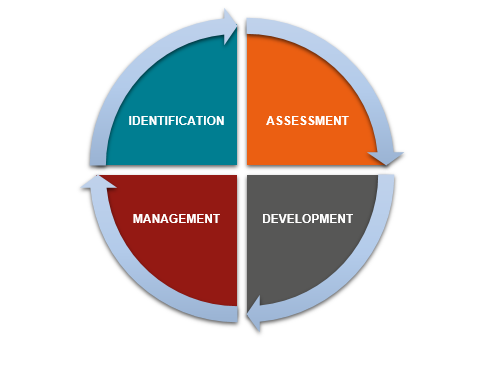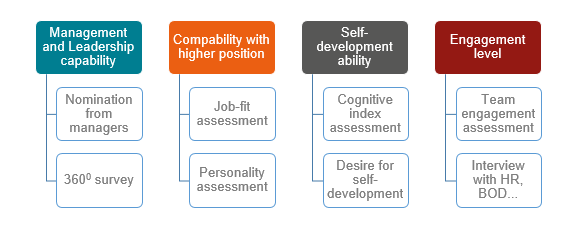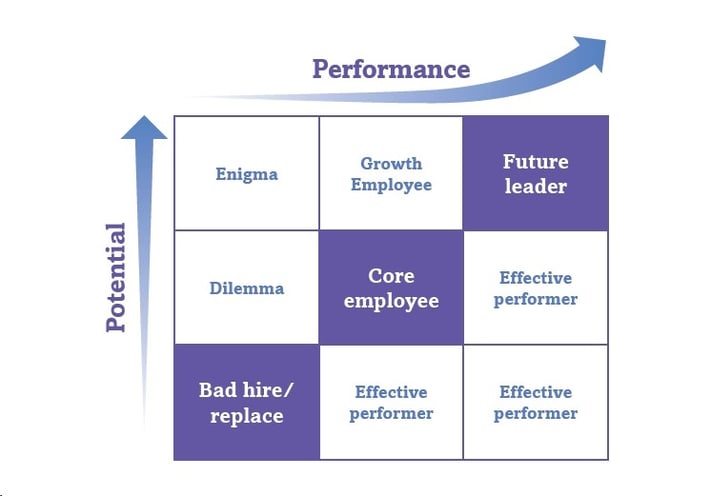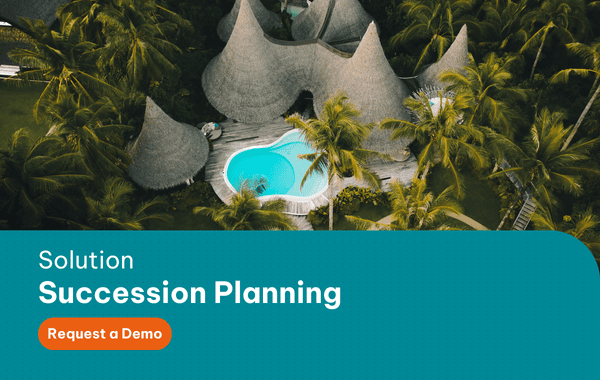Previously, we have acknowledged the appealing benefits of succession planning (SP). Surprisingly, most companies do not have an actionable process to select the successors or even if they do have, it is hardly executed smoothly.
A common mistake that organisations usually make is detaching SP from other human resources management actitivies such as recruitment, performance management or development. You want a strong talent pipeline with competent people, but you cannot just wish for it. Instead, you need to acknowledge the correlation between SP and stages in the employee cycle to get the big picture.

We present you a concrete four-phase SP phase. But instead of digging into details of each phase, here are the FAQs you need to know about this model.
Identification
Which positions should be incorporated to your succession plan?
Tough question. For sure, it’s not just C-level positions, but key positions that have critical influence on the organisation both operationally and strategically. Generally, they might be middle management positions that anchor the connection between executives and lower-level employees. The following figure suggests some aspects to consider when selecting key positions.

Figure: Indicators to identify key positions
Source: Chartered Institute of Personnel and Development
Who should be considered as participants in succession planning?
They are “Potentials”, who don’t need to be immediately ready to take charge of higher level positions nor to possess enough skills and knowledge right from the start.
Why “Potentials”?
We look for “Potentials”, aiming to gradually nurture and build a rich pool of competent choices for long-term development. Your substitutes should be developed to be as competent as their predecessors, but at the same time, you need to focus on enhancing bench strength to ensure that substitutes are always available.
Assessment
What should be assessed in this phase?
Potential and Performance are the two elements to be under examination in this model.
Why breaking down Assessment phase into two parts?
Breaking down assessment phase helps show how correlated SP should be with other stages in an employee cycle, in particular, performance management and training & development. Preparing necessary elements for these stages, such as a concrete-built competency framework or a clear and compact set of KPIs for each key positions, is advised if you want to assess the “Potentials” you have identified in the previous stage about whether or not they make it to the next stage.
What are the difficulty in assessing Performance and what is the solution?
For performance which is mainly evaluated by performance appraisals, the difficulty lies in the lack of data to assess or even the unavailability of effective indicators (aka KPIs). A few points to build KPIs and they all come down to the formula: Appropriate quantity – Actionable – Alignment.
How about assessing Potential?
For Potential, the issue is its ambiguity. What is potential? How can you measure potential? You have to break down the term “potential” into different components and tackle each of them with your available tools.

Figure 2: Aspects of potential to assess
Source: “Why Your Leadership Development Programme Fails” webinar,
TRG International, 2016
Development
How to consolidate and utilise data gathered from Assessment phase?
Based on the assessment, you are able to put your “Potentials” into respective boxes in 9-Box matrix. This mapping helps you find out how to deal with each case and along with other data gathered from Assessment phase, you and the “Potentials” finally come up with a plan to shrink development gaps between them and the key positions’ requirements.

How to execute training and development plan effectively?
Implementing that Leadership Development Programme (LDP) means you are executing the Development phase of SP. To maximise the impact of LDP, some of the points worth noticing are:
- Clarify the responsibility and benefits of the “Potentials” i.e. “What’s in it for me?”
- Diversify learning and training method
- Align the course of action with development and business goals.
There’s a trend to apply technology in human resources management. Does this do anything helpful to succession planning activity?
You should leverage on technology to make it convenient for your “Potentials” to learn. Online learning management system is a good choice as you can recommend and track learning progress of the “Potentials” while they have the autonomy to choose the courses and ensure that their learning goes in tandem with the pre-defined development plan.
Management
Who should be involved in succession planning apart from HR and the selected employees?
Don’t assume that HR holds accountability of SP. They might come up with all the plan, necessary tools and methods but they need the involvement from the managers to get a clear view of the current situation from within, especially in this Management phase, which is about appraising the progress, encouraging active participation and evaluating the programme.
Is there any suggestion on responsibility division between HR and the managers?
It’s too easy to say “That’s someone else’s problem” in this busy work world with different personal priorities and pressure. To prevent this case, HR department might consider the following actions:
- Engaging managers in analyzing and building key position profiles
- Engaging managers in setting up criteria to assess and refreshing after each year
- Communicating their roles in SP
- Including succession goals in their KPIs and providing necessary training or knowledge sharing on how to perform well in succession tasks.
How to measure the impact of succession planning?
Succession plan is a combination of different phases, thus, the final result should be drawn from the evaluation of each phase. A recommendation for organisations is to adapt the concept of Balanced Scorecard with each perspective representing an important aspect to be measured.

Figure 3: Adapting Balanced Scorecard concept to measure SP
Source: Effective SP, William J. Rothwell (2015)
Succession plan, as demonstrated with this model, is compact. But in fact, it involves all stages in an employee cycle: from recruiting the employees with good compatibility with company culture and values, to managing and developing them to their goals and business goals. That says, organisations wanting to execute succession plan effectively need to be precise in each phase. One error or a loose link can cause damage to the output of the whole chain. Next time, it’s no longer a FAQs but a survival guide on how to avoid certain myths which possibly lead your succession plan to fatality.
 English
English  Vietnamese
Vietnamese 


